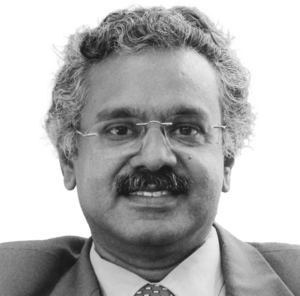


It is a sad reality of our time that deaths by suicide on higher education campuses have become a rather frequent occurrence. Reportedly, during 2018-23, as many as 61 students died at Institutions of National Importance (INIs) alone: IITs (33), NITs (24) and IIMs (4). This block of five years has not been exceptionally grievous.
During 2014-21, as many as 122 students lost their lives across all higher education institutions in the country. Available data points out that over half of these students belonged to the Scheduled Castes (SC), Scheduled Tribes (ST), Other Backward Castes (OBC) and Economically Weaker Sections (EWS). There remains no doubt that such students are susceptible to various social and economic challenges and hardships. Marginalisation, deprivation and caste-based discrimination, thus, emerge as the most dominant reasons.
At the same time, nearly 49 per cent of the students, who reportedly committed suicides, hailed from the general category. Obviously, the malaise pervades across wider sections of students. While caste-based discrimination on campuses needs to be dealt with severely, the growing incidences need to be analysed and understood in the larger context. Campus suicides may be attributable to a wide variety of reasons and causes: academic pressure, family circumstances, personal reasons, stress, financial distress, caste-based discrimination, and many forms of harassment.
Each of these reasons must, therefore, need to be addressed at their source by the government, society, institutions, parents and families.
Constant communication and positive social interaction among students, faculty and administration have become imminent in order to detect early signs of emotional distress and timely support to minimise distress. Staying away from home at a young age, particularly if one has not been used to a boarding school experience, is a source of stress itself. Remote communication with the family has also not been very helpful. Nuclear families, particularly if both parents are working, find it difficult to afford patience and time to listen to and understand their children. Community and neighbourhood support has been declining due to growing individualism, materialism and obsessions with privacy.
Under these circumstances, higher educational institutions have to assume far greater responsibilities than merely focusing on teaching and training. Sadly, they are least equipped to do so. They generally suffer from higher power distance, which adversely impinges upon free and fair communication between students and their seniors, teachers and administration. Classroom interactions are mostly confined to academics with exhortations for hard work. A highly formalised, standardised and hierarchical structure can never be conducive to promoting congeniality, or even empathy. Besides, campuses have grown too large and have become impersonal with all stakeholders busy pursuing their career goals and aspirations.
Most INIs have been trying to do their bit by putting in place mechanisms for providing personal and psychological counselling to their students. Most have launched dedicated portals for students in distress to access personal counselling and therapies in a confidential mode. Many of them have launched Apps like DOST, SAATHI, and MITR to guide and support students anonymously. Arrangements for in-person counselling are also available.
However, these counselling centres need to be strengthened. The onus to seek ‘help’ is often put on the students ‘in need’. They are supposed to seek an appointment which is not necessarily available immediately. They often function during office hours on working days and are often unable to respond promptly. INIs seem to be doing better than other higher educational institutions. Very little information is available about the central and state universities in this regard. Most of them do provide some counselling but for most of the time, the responsibility is assigned to an existing faculty member. They are yet to embrace the idea of an adequate number of full-time counsellors.
Higher educational institutions need to have dedicated counselling centres for providing comprehensive psychological services including evaluation, counselling, consultation, and individual as well as group therapies. They should be manned by an adequate number of licensed psychologists, psychiatrists, clinical therapists, mental health workers and social workers. Global standards prescribe a minimum of one professional counselling staff per 1,500 students on the campus. And these should include not only those who reside on the campus but also the day scholars.
Most importantly, higher educational institutions must proactively focus on creating an assimilative environment and a culture of cohesion on their campus. They must respect and make their stakeholders realise and respect the academic, cultural, economic and social diversity. They must have zero tolerance for all and any form of discrimination, however subtle and done even in jest, by batch mates, seniors, staff, faculty and administration. They also need to intensify their drive and efforts to regularly sensitise their stakeholders on this very count.
It has often been seen that some students, even a few faculty members, are not as sensitive towards certain sensibilities. Some of them may even be unsympathetic to those who made it to premier institutions because of affirmative action and reservation policy. At times, even a slight reference to these may be seen as a rebuke hurting the students deeply.
Campuses must become discreet about certain sensitive information about their students and staff. Information about caste, category, ranks and quota under which students may have secured admission needs to be developed as private and confidential.
Some are but many don’t. It is now time to evolve a strict code of conduct, standards and protocols about what can or must not be discussed, publicly, privately or even in informal social settings. Even the slightest hint about guessing or being curious about the caste and category of students must neither be taken kindly nor lightly. Social, economic and cultural diversity on campuses adds values but they need to be nurtured and harnessed carefully, cautiously and purposefully. Higher education institutions must seek to eliminate all sources of harassment and discrimination, howsoever, insignificant. These are sensitive matters and must be tackled with utmost responsiveness and sensitivity.


Furqan Qamar is a professor at the Faculty of Management Studies in Jamia Millia Islamia. Ayalur K Bakthavatsalam is an HAG Professor at NIT Trichy.